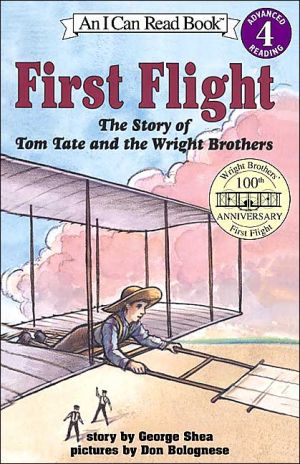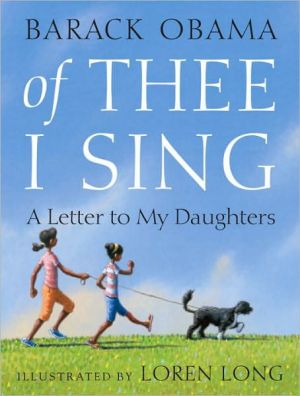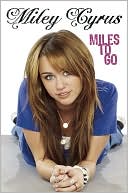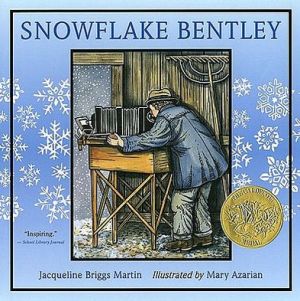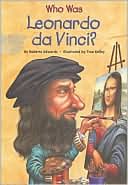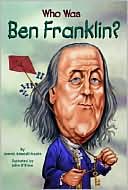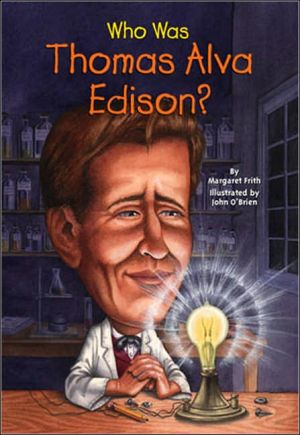First Flight: The Story of Tom Tate and the Wright Brothers (I Can Read Book 4 Series)
Up, up, and away!\ When Tom Tate hears that Wilbur and Orville Wright are building a flying machine, he can't wait to try it. Tom's dad thinks it's dangerous. Some people think the Wrights are crazy. Can Tom help the brothers get their dream off the ground?\ \ \ A twelve-year-old boy named Tom Tate meets Orville and Wilbur Wright and witnesses the invention of the airplane in Kitty Hawk, North Carolina, in 1903.\
Search in google:
Up, up, and away! When Tom Tate hears that Wilbur and Orville Wright are building a flying machine, he can't wait to try it. Tom's dad thinks it's dangerous. Some people think the Wrights are crazy. Can Tom help the brothers get their dream off the ground?Children's LiteratureNone of the tall tales that young Tom Tate was known to tell could possibly compare with the amazing events he witnessed, and in which he later was a participant. Here is the tale of the creation of the first airplane told from the point of view of the first boy (and only the second person) to fly with those maverick inventors, the Brothers Wright, at Kitty Hawk. A kid-friendly format and the light touch of the illustrator enhance the story.
\ Children's LiteratureOne hundred years ago, the Wright Brothers made a successful controlled flight at Kitty Hawk, NC. It didn't happen overnight and it didn't happen without mishaps and lots of hard work. Orville and Wilbur had built a flying machine-a glider-and young Tom Tate wanted to fly. He got his chance. His father and uncle were helping the Wright brothers. It was 1900 and the brothers were trying to perfect their flying machine. They came back the next year, but still had problems. In 1912 they were back again and this time they knew they wanted their machine to be powered by an engine so that they could control the flight. Then in 1903, they succeeded, and Tom was witness to it all. The author's note at the end is a very nice touch. 2003, HarperCollins, Ages 4 to 8. \ — Marilyn Courtot\ \ \ \ \ Children's Literature\ - Uma Krishnaswami\ None of the tall tales that young Tom Tate was known to tell could possibly compare with the amazing events he witnessed, and in which he later was a participant. Here is the tale of the creation of the first airplane told from the point of view of the first boy (and only the second person) to fly with those maverick inventors, the Brothers Wright, at Kitty Hawk. A kid-friendly format and the light touch of the illustrator enhance the story.\ \ \ School Library JournalGr 1-3This easy reader tells the delightful story of young Tom Tate, a boy who assisted the Wright Brothers with experiments for their historic flying machine. The author's note identifies Tom as a real person and supplies basic facts of his life, but the story focuses only on "Will and Orv's" visits to Kittyhawk. The fictionalized dialogue is fairly realistic and the story line progresses at an even pace. Bolognese has carefully researched the watercolor illustrations, which are consistent with photographs of the events. Children will identify with the spirit of this boy who enthusiastically volunteered to try out the glider when there wasn't enough wind to lift the grown men. A fine addition.Sharon R. Pearce, San Antonio Public Library, TX\ \ \ \ \ Kirkus ReviewsThis is a true tale of a boy who befriended the aviation pioneers and who was the second person to fly in their original glider. No one believes Tom, a Kitty Hawk resident and reputed storyteller, when he claims to have met two men from Ohio who are planning to fly through the air. The scoffing does not subside when Tom truthfully states that he flew the glider. Over the years, the Wright brothers make trips to Kitty Hawk, each time refining their machine, until the successful 1903 flight—and Tom is always there to witness it. This entry in the I Can Read Chapter Book series seems just right for new readers: Tom's presence makes the historical incident more accessible. The tale, with its limited vocabulary, doesn't allow for much character development, but has enough inherent drama to overcome the format. Bolognese's pictures add an old-fashioned touch, with a refreshingly simple palette that warmly evokes the era.\ \
